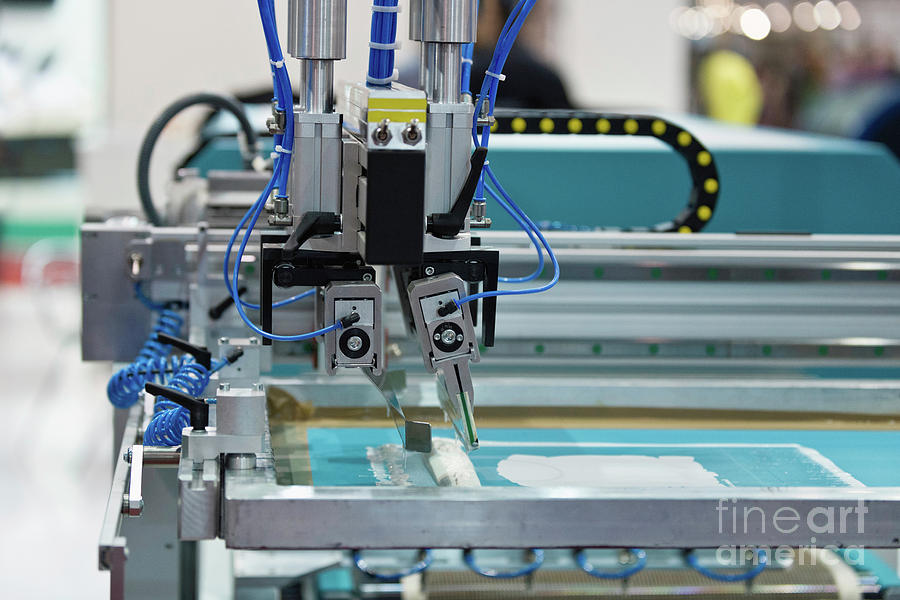
The configuration of the machine allows for greater precision in register and image characteristics. This compares to less than 1000 sheets per hour on a flatbed press.Īt these higher speeds it is necessary to dry the ink to achieve the output. The configuration of the press, the movement of its component parts and the substrate means that the speed of the ink leaving the mesh can be increased, resulting in print speeds up to 4500 sheets per hour. The substrate moves away from the mesh as the cylinder rotates. The difference in the mechanism is that the both the stencil and the substrate are in motion and the movement of ink from the mesh to the substrate is not simply dependant on the tension in the mesh lifting itself out of the ink film. There is a considerable difference in its mechanical operation but the transfer of ink from the mesh to the substrate remains substantially the same. This is an alternative form of printing press as compared to the graphic of the flatbed press shown above. If the mesh tension is low and takes time to pull the mesh away from the ink then some of the ink will be retained in the mesh openings resulting in an uneven film of ink. In some cases no ink will be drawn out of the mesh. If the substrate is dirty or the surface energy is lower than or close to the surface tension of the ink the amount of ink left in the mesh will increase resulting in poor quality print. The squeegee removes any ink that may be left on top of the stencil. There is always a small percentage of ink left in the mesh. The temporary bond draws ink out of the mesh openings and leaves a film of ink on the substrate. The ink wets the substrate.Īs the squeegee moves away, the tension in the mesh pulls the stencil away from the ink film. Ink Substrate RelationshipĪ temporary bond is formed by means of the relationship between the surface energy of the substrate and the surface tension of the ink. From this highly sophisticated equipment has been developed and is used in a host of different applications. The graphic shows screen-printing in its most basic form. Ideally, movement should be possible between substrate and screen. Machine: The machine base provides a surface for the substrate to be printed and the upper section secures the screen. The surfaces can range from bread to bio-medical sensors. Substrate: This is a general term for the surface that is to be printed. A large range of ink chemistries are available to suit a vast range of applications.

Printing Medium/Ink: Can take the form of a wide range of solids or dyes suspended in a fluid. This causes the ink to flow into the mesh and removes excess ink from the top of the stencil. Squeegee: a flexible polyurethane blade, held in a rigid mount or handle. The stencil is also known as "the screen". The image to be printed is created photographically on the stencil leaving open areas of mesh through which ink passes. The mesh is coated or covered with a photosensitive material. Stencil (Image below, courtesy of KIWO): This is a structure that consists of a frame onto which a mesh is attached under tension.

The basic items required to carry out the screen process printing are: The core of the process is the printing mechanism, with the most commonly used meshed stencil this is as follows. Before looking at its diverse applications it is best to remind ourselves of the fundamental elements of this 4000 year old process. It is now considered as a mass imaging technology. Over the years that it has been used substantially as a graphics production process techniques have been develop that make it ideal for processes that are crucial to the development and production in advanced manufacturing. Screen printing is an engineering process that is controllable, measurable and consistent. The current surge in its adoption is in applications where it is used to deposit controlled films of material over precisely defined areas. The 21st century has produced another step change. There are plenty of articles explaining the wonders of digital printing and there is no doubt it is a wonderful process, admittedly it has plateaued in its development but it still has plenty of opportunities in the market place and will surge again as the technology evolves. This statement is as silly as those who say digital printing will take over from every other printing process. It's really only used for printing tee shirts and simple posters.

It is old fashioned, dirty, smelly, unreliable, a craft, and it takes twenty years to become an ink covered expert. Screen printing is moving into another phase of growth similar to its take up in small and large format graphics, printing textiles and optical discs in 20th century.Įverybody knows about silk screen printing.


 0 kommentar(er)
0 kommentar(er)
